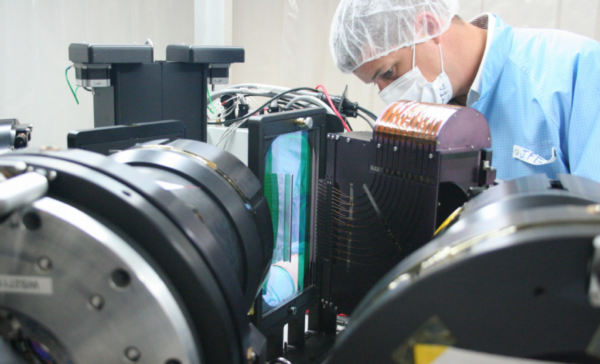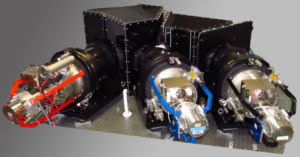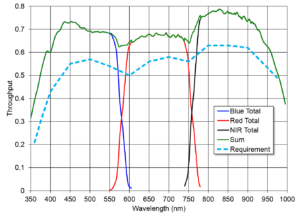
Each of DESI’s 10 identical spectrographs will accept one fiber-optic cable with 500 fibers. The light from the fibers will enter the spectrograph through a slit that has a shutter in front of it. If the shutter is open, the light from the fibers will be split using dichroics into three cameras that are each sensitive to different wavelength ranges and have different resolutions (R = λ/∆λ):
- Blue: 360 < λ ≤ 555 nm; R = 2,000 − 3,200
- Red: 555 < λ ≤ 656 nm; R = 3,200 − 4,100
- Infrared: 656 < λ ≤ 980 nm, R = 4,100 − 5,000
Before the light lands on the detectors,  it is spread using a volume phase holographic (VPH) grating. The detector arrays have 4096×4096 15μm pixels and are each housed in their own cryostat so that they can be kept very cold to maintain stability.
it is spread using a volume phase holographic (VPH) grating. The detector arrays have 4096×4096 15μm pixels and are each housed in their own cryostat so that they can be kept very cold to maintain stability.

The throughput of each arm of the spectrograph has been measured to demonstrate 70 percent efficiency across the whole redshift range. If the shutter in front of the slit is closed, there are several bright LEDs that will be turned on so that the fibers are “backlit” and can be seen with the fiber-view camera.


